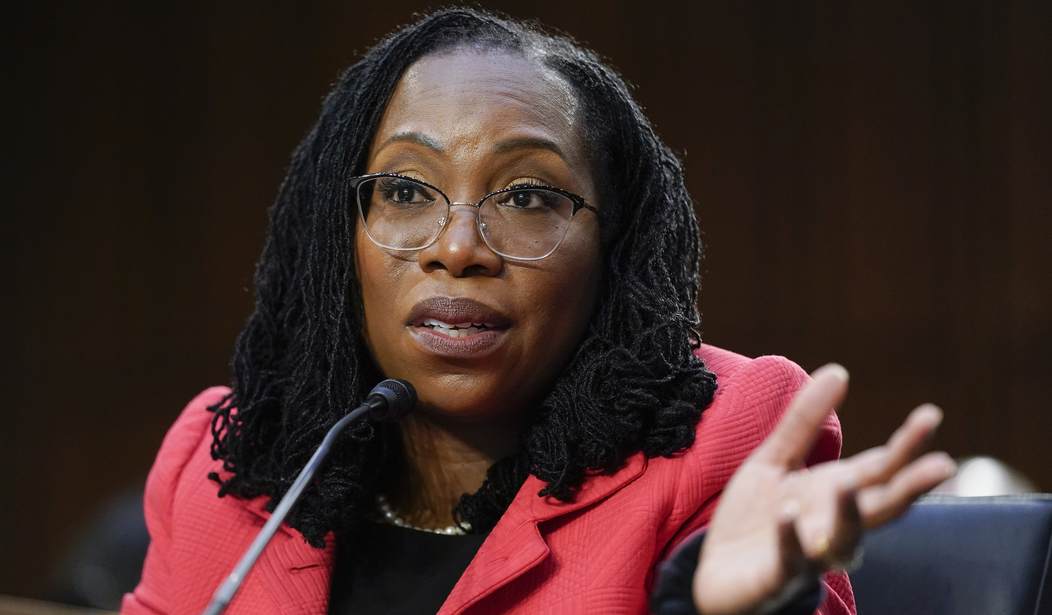Alternate headline: Pottery Barn rules apply to walkouts. In an 8-1 decision in which only Justice Ketanji Brown Jackson fully dissented, the Supreme Court ruled today that unions have to reimburse employers for damages caused by striking workers. The National Labor Relations Act does not confer immunity to unions or workers — the latest ruling from a court that has stiffened the boundaries for labor activities in the last few years:
The Supreme Court ruled on Thursday that federal labor law did not protect a union from potential liability for damage that arose during a strike, and that a state court should resolve questions of liability.
The majority found that if accusations by an employer are true, actions during a strike by a local Teamsters union were not even arguably protected by federal law because the union took “affirmative steps to endanger” the employer’s property “rather than reasonable precautions to mitigate that risk.” It asked the state court to decide the merits of the accusations.
The opinion, written by Justice Amy Coney Barrett, was joined by Chief Justice John G. Roberts Jr. and Justices Sonia Sotomayor, Elena Kagan and Brett M. Kavanaugh.
Three conservative justices backed more sweeping concurring opinions. A single justice, Ketanji Brown Jackson, dissented.
At issue was a job action by Teamsters at a large cement production and delivery company, which went on strike over their expired bargaining agreement. The union called for a strike in the middle of the day, even though the company had prepared a large amount of concrete for delivery that day, and that refusing to deliver it would not just ruin the product but also damage the vehicles. Sure enough, 16 drivers walked off the job. Glacier Northwest managed to get the concrete out of the trucks before they got seriously damaged, but their production that day was a total loss.
Glacier Northwest wants the Teamsters to reimburse them for the loss. The Teamsters argued that the NLRA immunizes them from such claims in state court and in federal court as well. Nope, writes Amy Coney Barrett for the 8-justice majority. The NRLA gives workers the right to strike but not immunity from damage they cause, especially when it’s clearly deliberate:
The drivers engaged in a sudden cessation of work that put Glacier’s property in foreseeable and imminent danger. The Union knew that concrete is highly perishable and that it can last for only a limited time in a delivery truck’s rotating drum. It also knew that concrete left to harden in a truck’s drum causes significant damage to the truck. The Union nevertheless coordinated with truck drivers to initiate the strike when Glacier was in the midst of batching large quantities of concrete and delivering it to customers. Predictably, the company’s concrete was destroyed as a result. And though Glacier’s swift action saved its trucks in the end, the risk of harm to its equipment was both foreseeable and serious. …
The Union failed to “take reasonable precautions to protect” against this foreseeable and imminent danger. Bethany Medical Center, 328 N. L. R. B., at 1094. It could have initiated the strike before Glacier’s trucks were full of wet concrete—say, by instructing drivers to refuse to load their trucks in the first place. Once the strike was underway, nine of the Union’s drivers abandoned their fully loaded trucks without telling anyone—which left the trucks on a path to destruction unless Glacier saw them in time to unload the concrete. Yet the Union did not take the simple step of alerting Glacier that these trucks had been returned. Nor, after the trucks were in the yard, did the Union direct its drivers to follow Glacier’s instructions to facilitate a safe transfer of equipment. To be clear, the “reasonable precautions” test does not mandate any one action in particular. But the Union’s failure to take even minimal precautions illustrates its failure to fulfill its duty.
Indeed, far from taking reasonable precautions to mitigate foreseeable danger to Glacier’s property, the Union executed the strike in a manner designed to compromise the safety of Glacier’s trucks and destroy its concrete. Such conduct is not “arguably protected” by the NLRA; on the contrary, it goes well beyond the NLRA’s protections. See NLRB v. Marshall Car Wheel & Foundry Co., 218 F. 2d 409, 411, 413 (CA5 1955) (strike unprotected when employees abandoned their posts without warning “when molten iron in the plant cupola was ready to be poured off,” even though “a lack of sufficient help to carry out the critical pouring operation might well have resulted in substantial property damage”).
The Teamsters argued that they can’t be responsible for hypothetical risks to employer property in the absence of workers. Barrett emphatically rejects that, and concludes that the union organized the walkout specifically to create the highest potential risk of catastrophic damage when they had a duty to take reasonable steps to prevent it, emphasis in original:
The Union is swinging at a straw man. It casts this case as one involving nothing more than a foreseeable risk that the employer’s perishable products would spoil. But given the lifespan of wet concrete, Glacier could not batch it until a truck was ready to take it. So by reporting for duty and pretending as if they would deliver the concrete, the drivers prompted the creation of the perishable product. Then, they waited to walk off the job until the concrete was mixed and poured in the trucks. In so doing, they not only destroyed the concrete but also put Glacier’s trucks in harm’s way. This case therefore involves much more than “a work stoppage at a time when the loss of perishable products is foreseeable.”
The union also argued that they should get credit for returning the trucks to Glacier’s facility, which prompts a biting riposte from Barrett:
That the drivers returned the trucks to Glacier’s facility does not do much for the Union— refraining from stealing an employer’s vehicles does not demonstrate that one took reasonable precautions to protect them.
Ouch. Thomas wrote a concurrence in which he argued that the court will need to jettison a precedent of pre-emption in Garmon; Alito, Gorsuch, and Thomas provide another concurrence to argue that the offense by the union wouldn’t be covered under normal NLRA pre-emptions anyway.
The only dissent came from Jackson, as I mentioned above, mainly on the basis that the federal judiciary has no business in this case at all:
As the majority acknowledges, the Board’s General Counsel has filed a complaint with the Board after a thorough factual investigation, and that complaint alleges that the NLRA protects the strike conduct at the center of this state-court tort suit. The logical implication of a General Counsel complaint under Garmon is that the union’s conduct is at least arguably protected by the NLRA. Consequently, where (as here) there is a General Counsel complaint pending before the Board, courts—including this Court—should suspend their examination. Garmon makes clear that we have no business delving into this particular labor dispute at this time.
But instead of modestly standing down, the majority eagerly inserts itself into this conflict, proceeding to opine on the propriety of the union’s strike activity based on the facts alleged in the employer’s state-court complaint. As part of this mistaken expedition, the majority tries its own hand at applying the Board’s decisions to a relatively novel scenario that poses difficult line-drawing questions—fact-sensitive issues that Congress plainly intended for the Board to address after an investigation. And in the course of inappropriately weighing in on the merits of those questions at this stage, the majority also misapplies the Board’s cases in a manner that threatens to both impede the Board’s uniform development of labor law and erode the right to strike.
Ahem. Congress created the National Labor Relations Board to deal with labor disputes, not property torts. The latter are matters for civil litigation separate from labor-management negotiations. It’s this argument from KBJ that has Thomas call for an end to the Garmon precedent, and which Alito et al expressly reject in their concurrence. To think otherwise would be to create an Open Season on employers’ property under the guise of ‘negotiations.’ Alito makes it clear what he thinks of Jackson’s reasoning in this footnote of the concurrence:
The Court wisely declines to address the argument on which JUSTICE JACKSON relies regarding the effect of the complaint before the NLRB on this litigation. See post, at 7–8. That argument represents a striking extension of Garmon preemption, which, as the Court notes, is already an “unusual” doctrine. See ante, at 3–4. If the state courts on remand dismiss this case on that ground, the decision, in my judgment, would be a good candidate for a quick return trip here.
Well, they’ve been warned. Not even Jackson’s fellow liberals climbed out on that limb with her.
This Glacier Northwest decision won’t keep unions from calling walkouts. But it should have them thinking twice about sabotaging the employers as part of their work action.








Join the conversation as a VIP Member